If you want a crazy delicious fried chicken recipe, then it has to be this recipe for The Best Southern Fried Chicken. Crispy, flavorful and absolutely divine!.
Buttermilk-marinated chicken is a staple of Southern cooking. The tangy, creamy buttermilk tenderizes the chicken and gives it a delicious flavor. But a common question is – how long can you safely marinate chicken in buttermilk? Leave it too short and you won’t get the full effects. But go too long, and you risk turning your chicken to mush.
I did a lot of research to find out how long chicken should be marinated in buttermilk. In this complete guide, I’ll share everything I’ve learned so you can always make perfect buttermilk chicken.
Understanding Buttermilk’s Magic
Buttermilk contains lactic acid which acts as a tenderizing agent. The lactic acid denatures the tough muscle proteins in the chicken, weakening the structure so the meat becomes more tender.
The longer the chicken marinates, the more the lactic acid can do its work. But go too long, and the acid will turn the chicken mushy. Finding the right balance is the key for ideal texture.
In addition to tenderizing, buttermilk also adds delicious tangy flavor to chicken that you just can’t replicate any other way.
Choosing the Right Buttermilk
I recommend using traditional or cultured buttermilk. Adding bacteria cultures to milk to thicken it and give it that unique tang makes the cultured variety.
Avoid “buttermilk substitutes” made by curdling milk with lemon juice or vinegar. They don’t have the depth of flavor that real buttermilk provides.
For best results, use full-fat buttermilk. The extra fat keeps the chicken juicy and helps it brown while it’s cooking.
Optimal Marinating Times
Here are the recommended marinating times:
-
Minimum 4 hours: You’ll notice some tenderizing and flavor at this point.
-
12-24 hours: The ideal timeframe. You’ll get incredible juiciness and well-developed buttermilk flavor.
-
Over 24 hours: Don’t go past a full day – the texture will start to suffer.
The thickness of the chicken also factors in. Chicken breasts that are too thin can’t handle marinating for as long as chicken thighs or bone-in chicken breasts.
Signs of Over-Marinated Chicken
Here’s how to tell if your chicken has marinated too long:
- Mushy, slimy texture
- Falling apart easily
- Unpleasant sour flavor
If you notice these, it’s best to discard the chicken and start over.
Mastering the Buttermilk Marinade
Next, I’ll answer some common questions about buttermilk chicken:
Can I use low-fat buttermilk?
Yes, but full-fat works better for flavor and texture.
Should I add salt to the marinade?
Yes, salt improves flavor and helps tenderize. Use 1-2 teaspoons per quart of buttermilk.
What seasonings can I add?
Try garlic powder, onion powder, herbs, spices, hot sauce – get creative!
How do I ensure even marination?
Submerge the chicken fully and weigh it down so it stays under the buttermilk.
Do I need to rinse after marinating?
No, just let any excess drip off. The buttermilk adds flavor.
Can I reuse the marinade?
Never reuse it – discard it after marinating raw chicken to avoid bacteria.
What chicken works best?
Bone-in, skin-on pieces are ideal, but boneless skinless also works.
Can I marinate at room temp?
Absolutely not! Refrigeration is a must for food safety.
What if I marinate too long?
If it’s just slightly too long, try gentle cooking methods like baking. But if it’s very mushy, it’s safest to discard it.
Can I freeze marinated chicken?
Yes, for up to 6 months. Thaw in the fridge before cooking.
Does marinating affect cooking time?
Not significantly, but use a meat thermometer to ensure food safety.
What if I don’t have buttermilk?
In a pinch, make a substitute by curdling milk with lemon juice or vinegar. The flavor won’t be quite the same though.
Achieving Buttermilk Chicken Perfection
Marinating chicken in buttermilk is an easy technique that takes boneless chicken from bland to fabulous. Follow the guidelines above for ideal marinating times. Monitor the texture closely and stop marination at 24 hours maximum.
Take your Southern cooking to new heights with juicy, ultra-flavorful buttermilk fried chicken. Just be sure not to overdo the buttermilk soaking and you’ll have chicken with the perfect texture every time.

FRIED CHICKEN RECIPE FOR CRUNCHY SKIN AND TENDER CHICKEN
I’m from the south and we all know that Fried Chicken is a staple here. One of my favorite recipes is for The Best Southern Fried Chicken. It took me a few years to get it just right. This recipe produces a crunchy exterior with moist chicken on the inside. The absolute perfect chicken in my opinion. Really good fried chicken takes time so don’t rush this one.

No, please don’t if at all possible. If you are going to go through the trouble of making fried chicken from scratch, you will be missing out on so much flavor. Please, please try to pick up the real stuff (not the kind that you make with milk and vinegar and lemon juice (more on that below – that is good for most recipes but not the most ideal for fried chicken). An overnight soak is optimal for maximum juiciness.
The mixture of the cornstarch and flour helps give it that extra crunchy exterior.
This recipe works with any cut of chicken. The key is just making sure the chicken is cooked to 165F degrees internal temperature.
Peanut oil has a neutral flavor that won’t compromise the flavor of the chicken. Canola oil would be my second choice.
I deep fry my chicken in a deep fryer but you can also do this in a deep, heavy bottomed pot. I just find that you often get darker burn-like spots with a cast iron pan if you aren’t super careful.
Well, you’ll need to use their famous 11 herbs and spices. Just substitute the garlic powder, onion powder, salt and pepper in this recipe for the following seasonings: (you will skip the step of seasoning the individual chicken pieces and stir in 2 1/2 Tablespoons of this seasoning in with the flour/cornstarch mixture). Note: you will not use this entire amount. Mix it together and use about 2 1/2 Tablespoons of the mixture in place of the seasonings I provide below if using it in this recipe. 2 teaspoons salt ½ Tablespoon dried thyme ½ Tablespoon dried basil 1 teaspoon dried oregano 1 teaspoon celery salt ½ Tablespoon black pepper 1 Tablespoon mustard powder 2 Tablespoons paprika 2 Tablespoons garlic salt 1 Tablespoon powdered ginger 1 Tablespoon pepper (use white pepper if you have it).

HOW TO MAKE THE BEST SOUTHERN FRIED CHICKEN:
Place the cut up chicken in a large bowl. Add the salt, garlic powder, and onion powder, toss to coat the chicken in the spices.
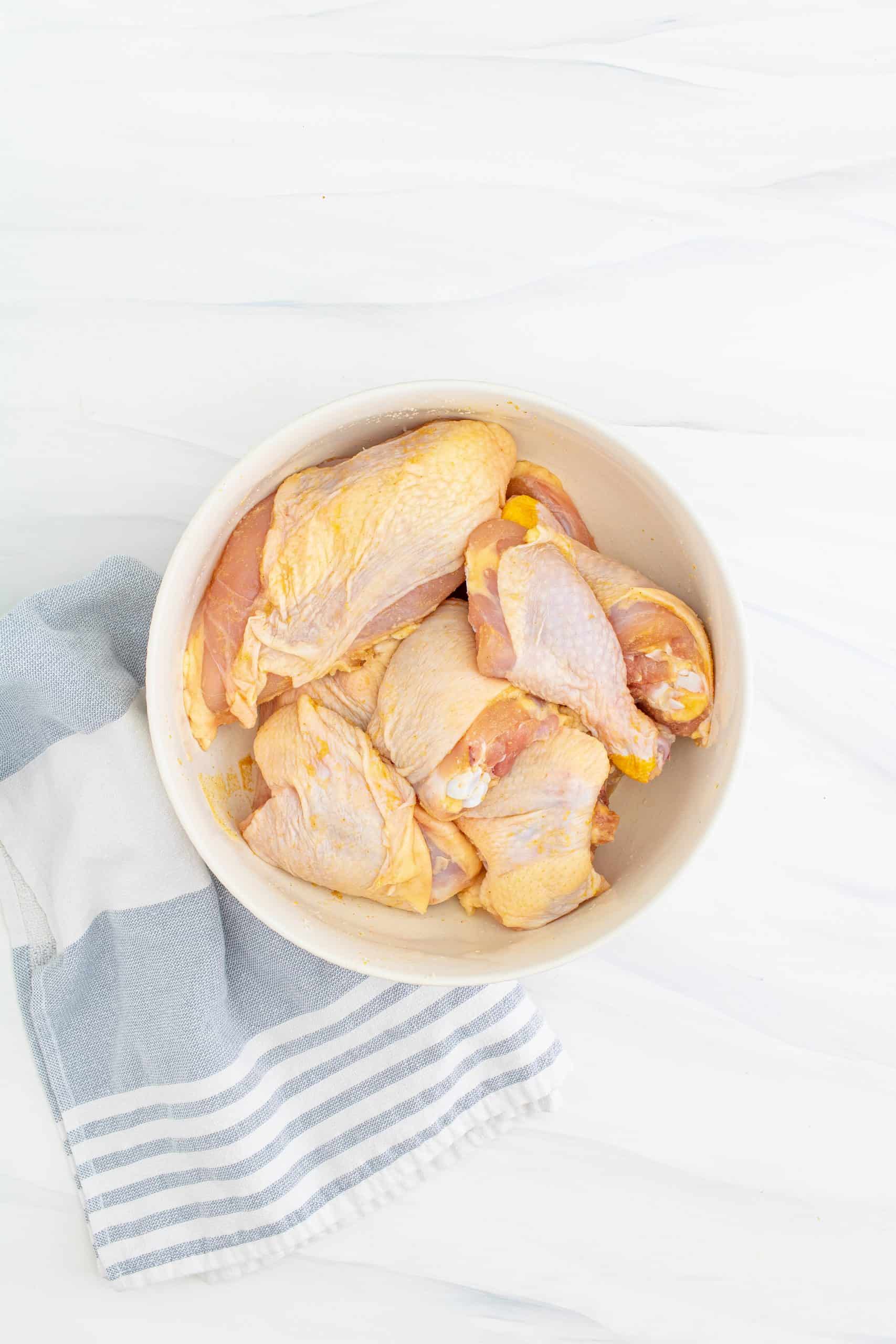
Add the buttermilk and hot sauce to the bowl, stir until everything is combined. Cover with plastic wrap and let marinate in the fridge for at least 2 hours, but it’s best if you can let it sit overnight.
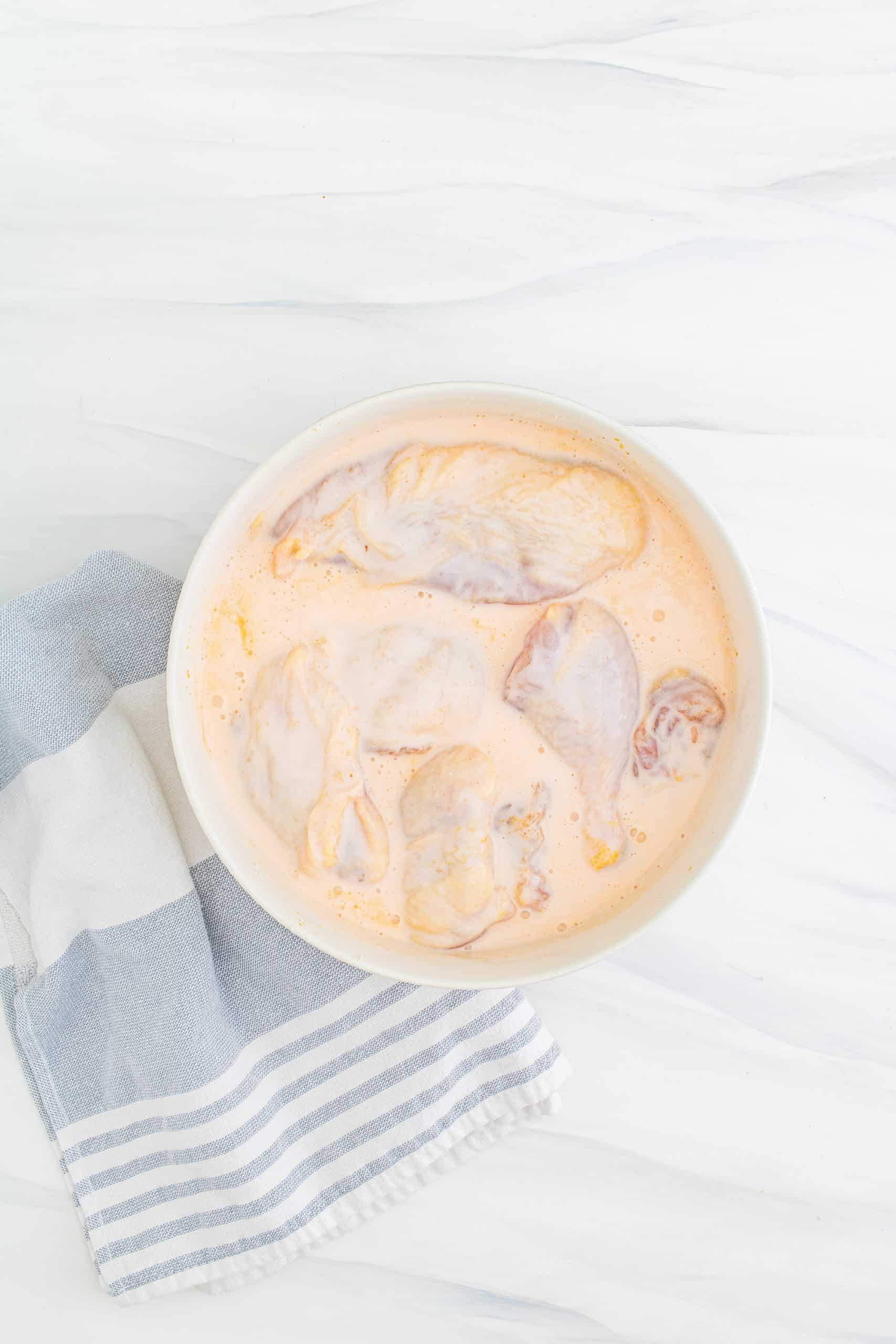
In a medium-sized bowl add the flour, cornstarch, salt and black pepper.
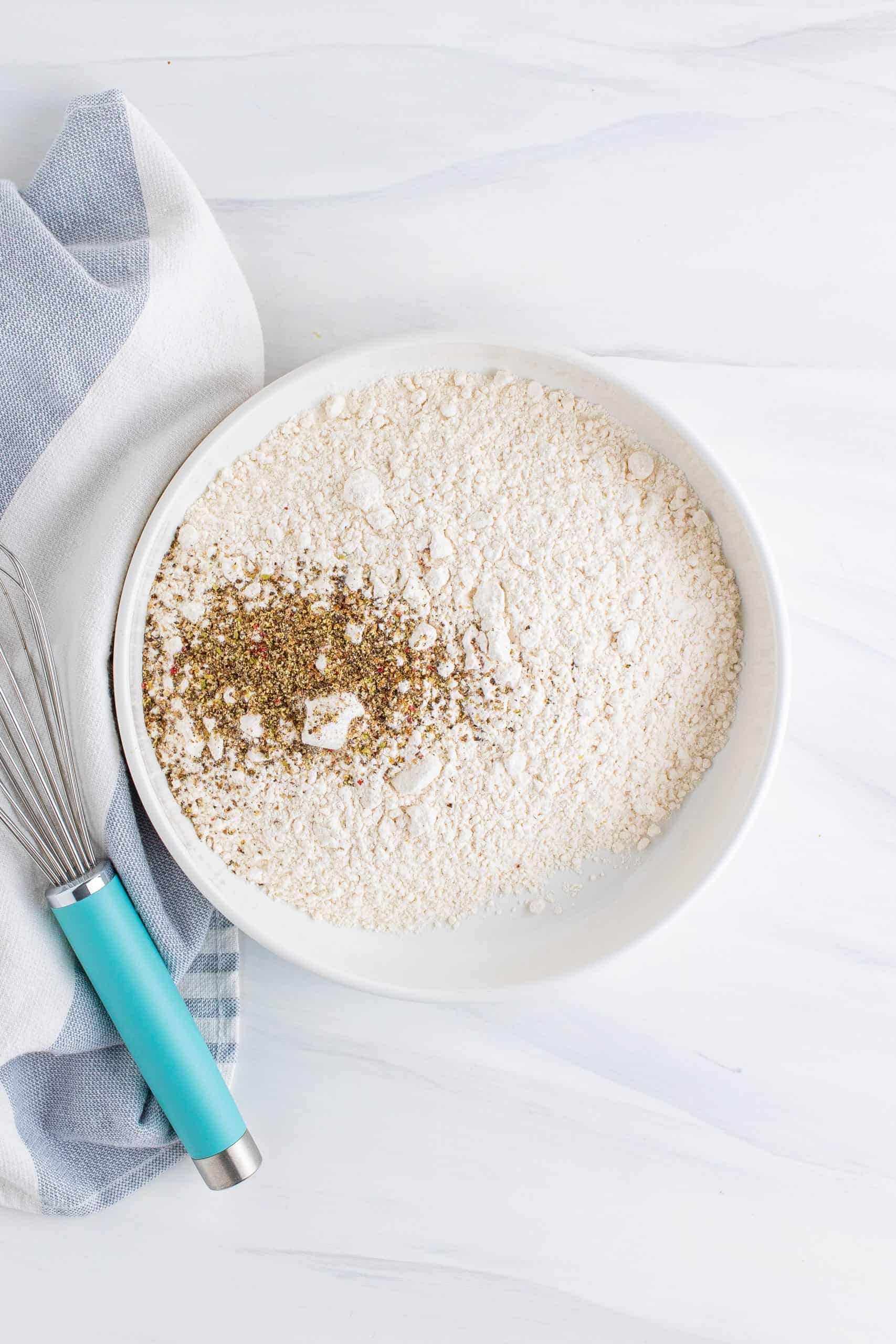
Whisk this mixture together until completely combined.

Taking the chicken pieces one at a time, let the excess buttermilk drip off. Coat in the flour mixture, make sure the chicken is well coated. Shake off any excess. Put the chicken somewhere else and wait a few minutes until the coating looks a little runny.
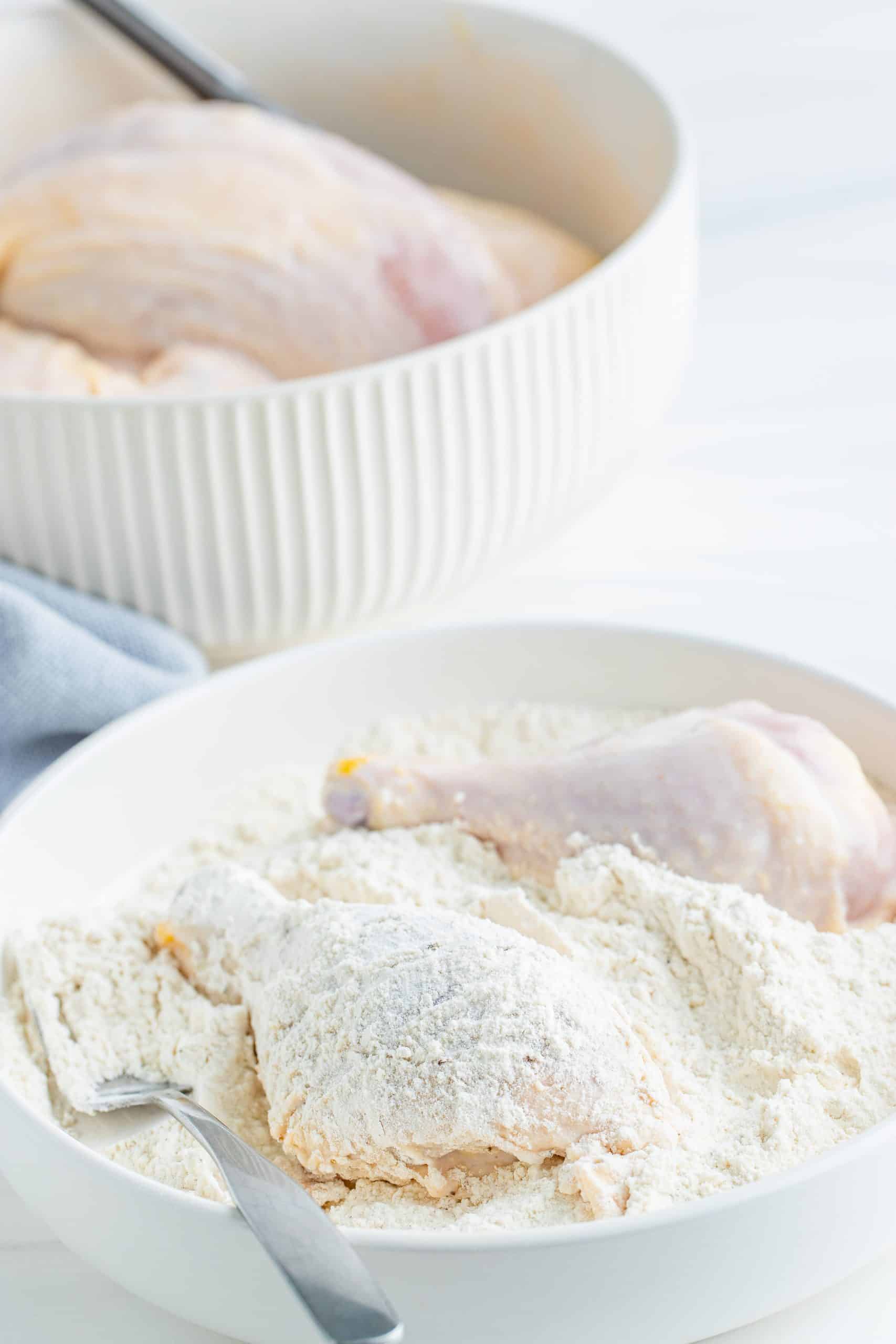
Fill up a deep fryer with peanut oil (or neutral frying oil of your choice) and preheat to 325°F. (If using a dutch oven or cast iron skillet, I would recommend preheating to 300°F – you may need to turn down the heat if you notice it getting too hot – cast iron holds heat very well so it is easy for it to get too hot so please monitor. ) Carefully add the piece of chicken to the deep fryer. Fry until golden brown, turning every few minutes. You will need to fry in batches so you do not overcrowd the fryer.
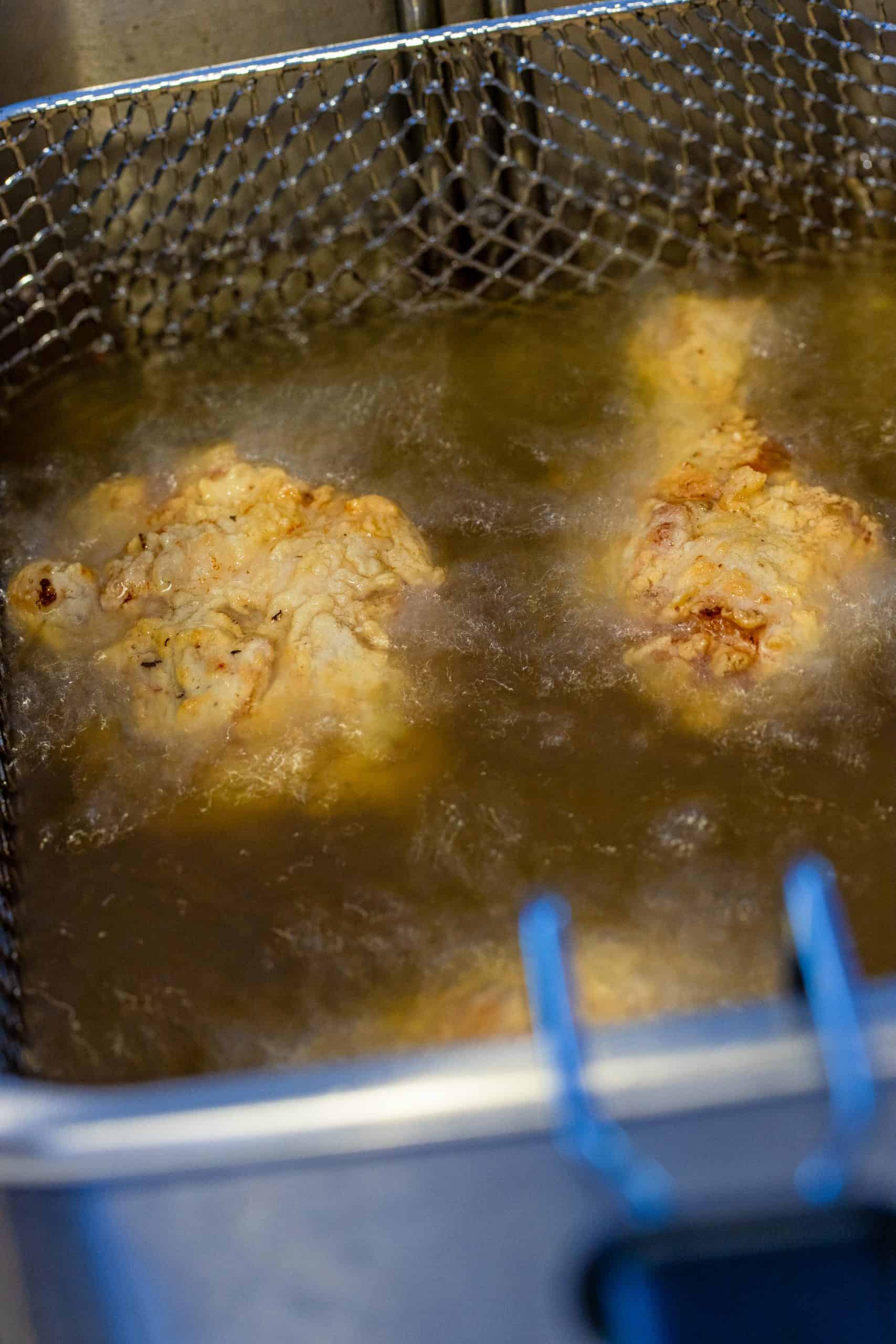
Chicken is done when golden brown and the internal temperature reaches 165°F. If you use a big chicken, the dark meat will take 12 to 14 minutes and the white meat 8 to 10 minutes.
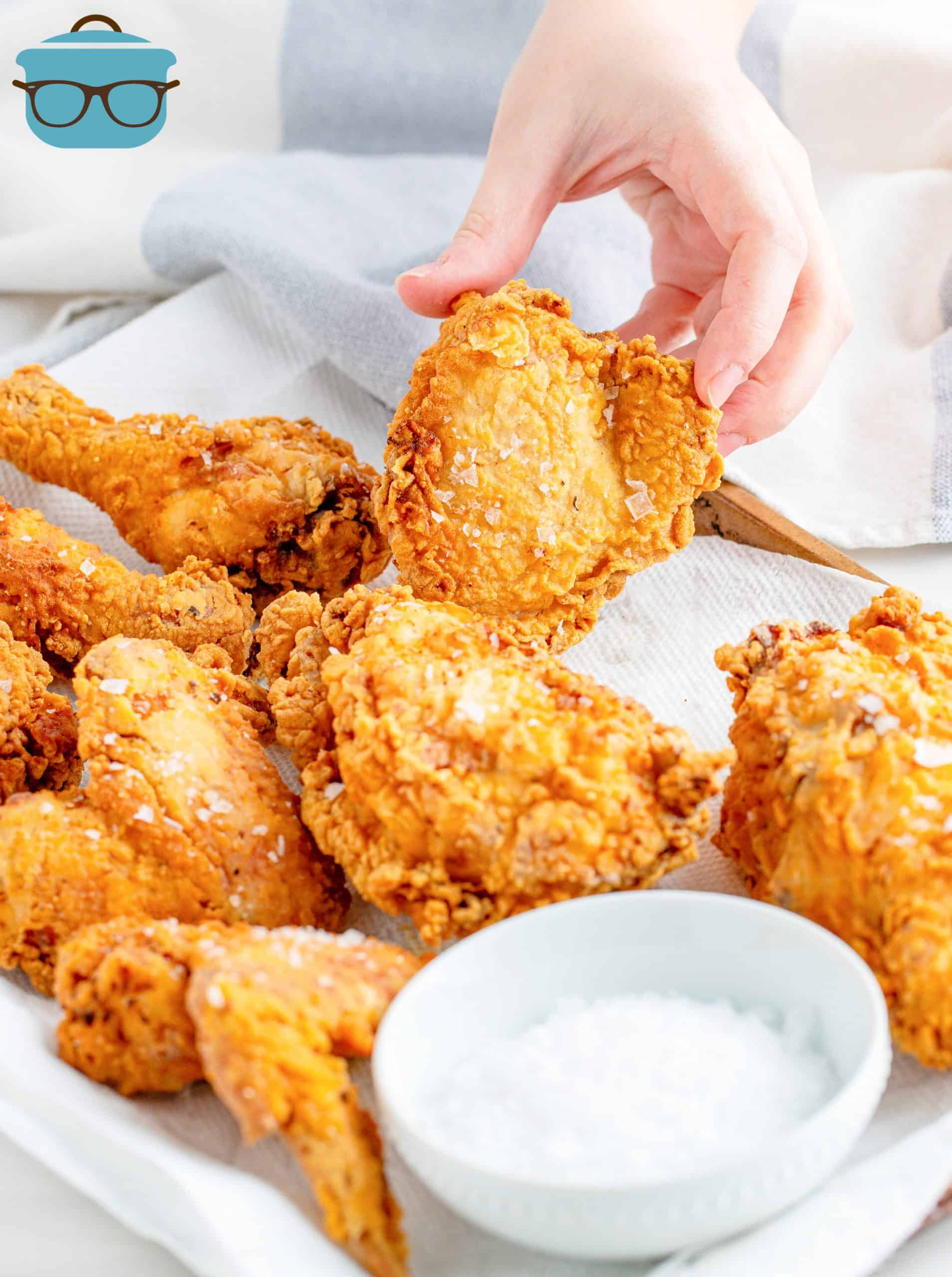
When the chicken is done frying, place it on a paper towel lined sheet tray and immediately sprinkle a little flaked salt on top. Continue with the rest of the chicken pieces.

- Chicken needs to be stored in the refrigerator. To do this, let the fried chicken cool down all the way before putting it away. This will help the coating stay crisp.
- Put the chicken that has been cooked in a container that won’t let air in. Store it in the fridge for up to five days. You can use the oven, microwave, or air fryer to heat it up again. When you heat the meat again, the oven and air fryer will help keep the skin crispy.
- If you want to freeze the chicken, put it in a container that won’t let air in and put it in the freezer. It will stay good for up to 6 months.
- To reheat frozen Fried Chicken, let it thaw in the fridge and then bake it at 400F degrees in the oven or air fry it until it’s hot all the way through.
Can I marinate chicken for 2 days?
FAQ
Can chicken sit in buttermilk too long?
Can you over-soak chicken in buttermilk? Yes! You can soak chicken in buttermilk for up to 48 hours. Soaking for longer will make the chicken overly mushy and stringy in texture.
How long can chicken soak in buttermilk in the fridge?
Pour buttermilk marinade into a resealable plastic bag. Add chicken pieces, coat with marinade, squeeze out excess air, and seal the bag. Marinate in the refrigerator for 2 to 8 hours.
Can you let chicken marinate in buttermilk for 2 days?
The best part is that you can marinate the bird in the fridge for up to two days. This makes it softer, and now you have a dinner that doesn’t need anything else…
